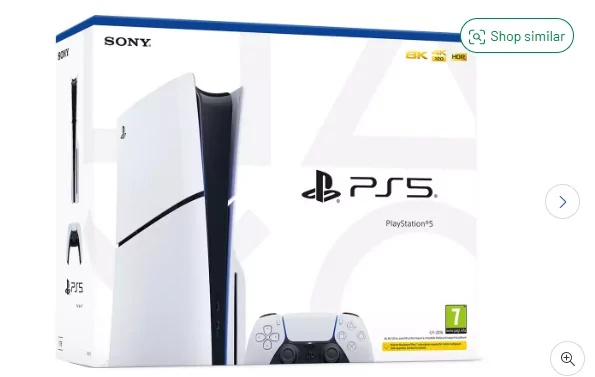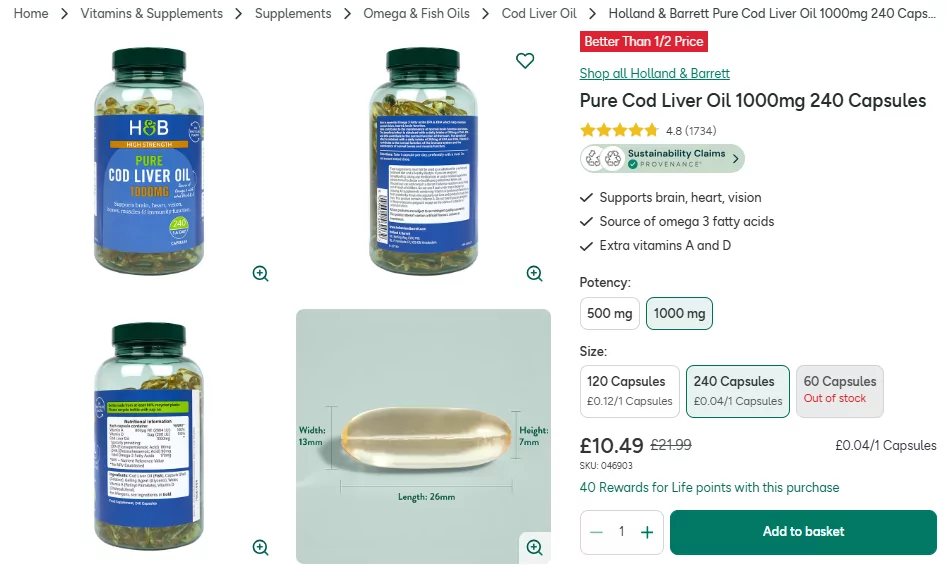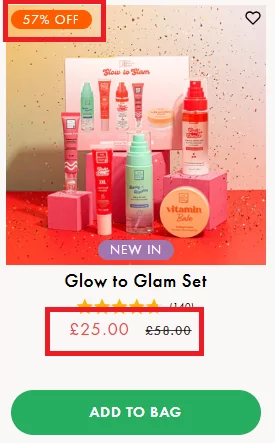What is Bundle Pricing?
Bundle pricing allows sellers to bundle multiple one-time products together, usually for a discount. Bundles can be provided as one-time purchases or subscriptions.
Bundle pricing offers several advantages to customers, allowing them to buy complementary products at a lower price.
But it also benefits sellers, allowing you to boost sales and offer more value to customers.
There are several different approaches you can take to bundle pricing.
Bundle Pricing Examples
Here are some of the most common types of bundle pricing.
Pure price bundling
This is when products almost have to be bundled together. This is often due to customer expectations or because they couldn’t function without one another.
A good example is gaming consoles. PlayStation 5 controllers are standalone products, but the basic PlayStation package deal contains one because you need a controller to use the console.

Mixed price bundling
This is when individual items can be bought separately but are offered at a cheaper bundled price. They also often work better if combined than bought individually.
A good example of this can be seen in fast food restaurants like KFC. All the products in the bucket below could be bought individually but would cost £21.90. When purchased together, they cost just £14.99.
These bundles often come with drinks too. This makes sense for customers because they will likely want a full meal and will probably eat with others.

Same item price bundling
This is when you buy the same product multiple times. It works best for items that people consume regularly. Buying more can save money and is convenient because customers don’t have to keep ordering it.
For example, the cod liver oil tablets below are the same basic product but can be purchased based on:
✔️ Strength
✔️ Number of capsules in a container
✔️ Number of containers

Leader price bundling
This is when a core product is bundled with several complementary products. Games consoles are again a good example of leader bundling.
They often come bundled with additional games, controllers, and accessories to enhance the player experience.

Bundle Pricing Pros and Cons
As you can see from the examples above, bundle pricing has many benefits—but there are also some downsides to be aware of. Let’s take a look at the pros and cons.
Pros
✔️ Offer more value: By purchasing complementary products, customers get more for their money and often enjoy an enhanced experience.
✔️ Increase sales: Bundles encourage customers to buy more, helping you to increase your sales.
✔️ Expose customers to new products: Customers may get products that they wouldn’t normally buy in a bundle. They might enjoy the product and buy it again in the future.
✔️ Reduced marketing costs: Marketing a single bundle is cheaper and more straightforward than marketing all of the individual products within it.
✔️ Easier logistics: Packaging and delivering a bundle is often easier than tracking individual items.
✔️ Shift stock: If you have stock that isn’t selling, then bundling could help you sell it. However, ensuring you aren’t simply selling customers products they don’t want or need is important.
Cons
⚠️ Lower margins: If you’re used to selling items individually then bundle pricing could reduce your profit margin—especially if it doesn’t result in additional sales.
⚠️ Careful curation: You can’t just put anything into a bundle. Customers need to see value multiply by buying them together. Getting a bundle wrong might even subconsciously tell customers you don’t understand their needs and damage your brand.
⚠️ May impact perception: If customers don’t use the bundled products, they may perceive them as poor value.
⚠️ Stock management can become complex: While delivery becomes easier, compiling bundles is challenging. You may be unable to sell a whole bundle if just one product is out of stock.
What Businesses Does Bundle Pricing Suit?
Bundle pricing works well for many industries, but it’s particularly common among:
Food businesses
Bundle pricing is common in many food industries. We’ve already mentioned that it benefits fast-food businesses. These companies tend to provide a limited range of products that complement each other well and can be sold for cheaper together.
Providing bundled pricing makes these options more sensible for larger groups, such as families who want to buy full meals together.
However, it also works for meal kit delivery services—think Hello Fresh and Blue Apron. Consumers often buy these products for some sort of long-term benefit, such as convenience or weight loss. Bundling makes it easier for them to realize these aims.
For example, let’s say you’re busy and want to minimize the amount of shopping you have to do. Buying meal kits for the month will take far less time than buying them individually. Plus, you’ll likely save money by paying a bundle price.
Retail
The retail sector is incredibly competitive, so any way to attract customers through lower prices, more value and increased sales is welcome. Product bundle pricing is one way to do this.
Many retailers offer customers the option to add complementary products to their basket at a discounted price while shopping.
Another good example of retail bundle pricing is the direct-to-consumer (D2C) replenishment model. This is when consumers subscribe to a product they regularly replenish—good examples include razor blades (think Dollar Shave Club) or hair care products (like Scandinavian Biolabs).
If consumers know that they’ll keep using a product, it makes sense to pay a bundled price that is cheaper per item.
Telecommunications and media
It’s common for phone, entertainment and internet services to be bundled together. This is because both services are delivered in a similar way.
For example, Sky provides all three services with a choice of broadband speeds.

Software
Software companies often provide complementary suites of apps. Good examples are:
- Microsoft Office 365
- Google G Suite
- Adobe Creative Cloud
Let’s take Adobe Creative Cloud as an example. It includes a whole range of applications including:
- Photoshop
- Acrobat
- InDesign
- PremierPro
- Illustrator
You can either buy one app for just under £10 per month, or all 26 apps for just under £30—which is comparatively great value.

Insurance
It’s common to buy different insurance types together. For example, home insurance is often purchased along with contents insurance.
Equally, life insurance might also be bundled with health insurance, as the two are intrinsically linked.
It’s also common to bundle multiple insurance policies. Many car insurers offer multi-car policies allowing households with more than one car to get a discount.

Step-by-Step Strategy For Bundle Pricing
Here’s how you can decide if bundle pricing will work for you and how to do it correctly.
1. Understand customer preferences
It’s important to know what bundled products your customers will get value from.
Consider which of your products or services:
- Complement each other
- Are considered expensive
- Are valued by customers
- Are popular amongst customers
Try to create a bundle that your customers will see as a no-brainer.
2. Ensure bundling aligns with your business strategy
If your business is trying to increase profit margins, bundling might not be a good strategy. However, if you want to increase sales or introduce customers to new products then it might be suitable.
Consider the implications of bundling and how it will impact your business.
3. Choose what bundle pricing options you’ll offer
Think about how much flexibility you want to give customers. For example, will you provide them with fixed bundles or can they pick and choose?
In our meal kit bundle example website, we’ve given customers the option to:
- Choose how many meals they want per week.
- How many people should those meals feed?
- Dietary requirements
We’ve locked it into paying weekly, but you could also give customers the option to pay in advance for additional discounts.
4. Calculate the right discounts
Discounting is critical to bundling. People want to know that they are buying more but paying less. Make sure you carefully consider how much of a discount will improve customer satisfaction.
Calculating the impact of cost savings on your business is also important. Consider:
💡 How much you can afford to discount: Set your bundle price too low and you could reduce your profit margins or even lose money.
💡 Competitor pricing: Offering a lower bundle price than competitors is likely to attract customers.
💡 Customer budget: It’s no good bundling products if the total cost is more than customers can afford.
You should also ensure the customer clearly understands how much money they are saving. They are less likely to buy your bundle if they have to calculate the savings themselves.
This beauty retailer clearly shows the amount the bundle saves them and how much it is further discounted by.

Subbly makes bundle pricing easy
Subbly includes five ready-made bundle pricing models to choose from, including:
🏷️ Price per item: Set a common base price and extra margin to any individual item.
🏷️ Price per bundle: Set a different price per bundle.
🏷️ Fixed discount per item: Give increasing discounts per item per item, to incentivize adding more items.
🏷️ Fixed discount per bundle: Give increasing fixed discounts per bundle per tier.
🏷️ Percentage discount for the whole bundle: Give percentage discounts per bundle per tier to encourage higher volumes.
Or you can create your own custom pricing model. Learn more about our subscription bundle pricing.
5. Offer bundle pricing subscriptions
Subscriptions are a great way to improve convenience for customers and provide sustainable cash flow for your business.
And there’s no reason they can’t be applied to bundles.
Subscriptions work particularly well if your product is something that customers will use or needs replenishing regularly.
6. Monitor and adjust prices
Once you’ve launched your bundles, monitor your sales data and user feedback so you can optimize your pricing strategy.
For example, you might find that bundle sales aren’t as good as you’d hoped. Customer feedback may reveal that they don’t want one of the items in your bundle. Replacing this might increase sales.
Make Subscriptions Easier with Subbly
As mentioned earlier, adding subscriptions to your bundles is a great way to encourage long-term commitments from customers which will increase their lifetime value to you.
The problem is that many eCommerce platforms don’t offer a subscription capability as standard.
For example, Shopify requires you to install a range of third-party plugins. This adds cost and instability to your website, causing issues like payment processing failures or missed renewal order billing.
That’s why we recommend using a dedicated subscription platform like Subbly:
✔️ Full ecommerce platform, with subscriptions at its core.
✔️ Everything you need to sell and manage subscriptions in one platform. No plugins needed.
✔️ All major payment processing services are supported.
✔️ Multi-language and multi-currency checkout options.
✔️ Ultra-fast support response times and a proactive, community-driven approach.
Subbly offers a range of features to support bundling, including:
⚙️ Set limits on the number of bundle items available to customers.
⚙️ Enable customers to filter items by category.
⚙️ Set default groups so customers see items matching their preferences.
⚙️ See which items need to be in stock ready for customer replenishment.
⚙️ Manage upcoming shipments.
⚙️ Get email alerts on upcoming renewals.
Contact us today for a 14-day free trial and see how Subbly subscriptions can boost your bundle pricing strategy.

